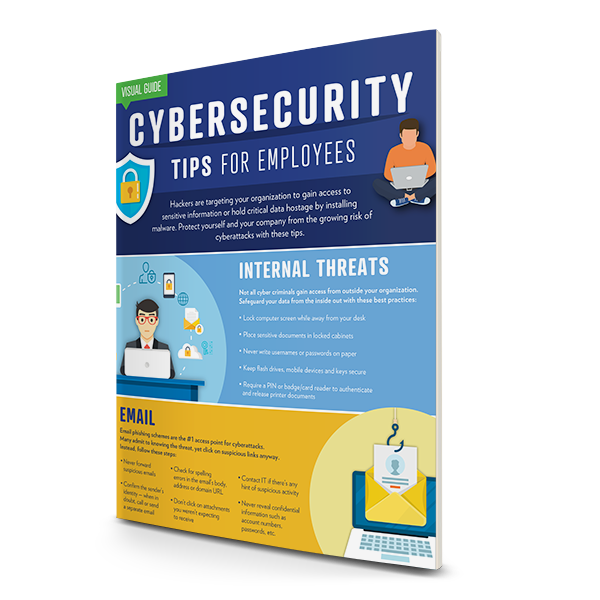Which Projects Should Come First?
You’re surrounded by IT projects – your servers need upgrading, your wireless network needs help, you haven’t had a good backup in months, and some of your PCs are still running Windows 7.
Where do you start? What’s most important and what can wait? These 3 tips can help you answer those questions.
Tip 1: Look at the Big Picture
Stepping back to consider the big picture can help you pinpoint the projects that need to happen first. The big picture is like your compass, pointing you in the right direction.
Ask yourself: Is your company making any major strategic moves this year?
If not, this is your time to focus on nuts-and-bolts projects that will shore up your infrastructure. Servers, networking, and wireless are components every network has. They are the nuts and bolts. But are you doing them right?
- Do you have the right number of servers?
- Is the right amount of compute in place to run your desired applications?
- Are you running the right wireless solution?
- Do you have the right networking in place?
- Are you letting hardware sit around without updating its firmware?
On the other hand, maybe you’re in the midst of key strategic changes at your company. Are you in growth mode? Are you rolling out a new service to your customers? Then your focus should be on the projects that will allow you to support those changes.
- Are you finding that sharing files or working collaboratively in a document is cumbersome? Maybe you should be thinking of a cloud file-sharing solution.
- Do you have a lot of locations? You could be looking at an SD-WAN solution.
At the end of the day, you need to keep the big picture in mind. It’s tempting to look at your old server and say it’s time to replace it. But what if your company is looking to move to the cloud? You might not even need that physical server for much longer, so replacing it may not make sense.
Maybe you’re eager to launch some new applications. But if your backup and disaster recovery isn’t up to speed, those cool new apps won’t save you when you get attacked with ransomware.
Looking at the big picture can help you see which projects should take center stage.
Tip 2: Identify your Greatest Weaknesses
No one wants big gaping holes of vulnerability or poor performance in their network. But how do you know where those gaps are?
Whenever we start working with a new client here at Elevity, we always begin with a network assessment. That assessment helps us find out what the client is doing well and what they’re not doing so well.
In addition, Elevity really gets to know the client. We build trust with our clients over time by meeting with them regularly and truly understanding their business and environment. That knowledge, combined with the results of the network assessment, shows us where the holes are. From there, we know which projects to recommend.
Comparing your network’s strengths and weaknesses can shine a spotlight on which projects you should focus on first. For example, things like security and backups aren’t super sexy, but they’re super important. If you’re not doing them well, everything else you’re doing is at greater risk of being attacked or lost. So, prioritize your projects based on where the holes are.
Tip 3: Don’t Leave Rome Burning in the Background
Security must be first and foremost for any network. Ignoring security in favor of a shiny new project is setting yourself up to fail.
Imagine someone painting a landscape while Rome is burning behind them. The artist is working on the project they want to work on, but they’re ignoring the most important thing. If you don’t protect Rome from burning, your pretty painting is all for naught.
A thorough network assessment can tell you if your security measures are up to snuff. If they aren’t, that’s where you need to start.
Another way to think about it is going to the doctor to fix a hangnail. The doctor takes one look at you and says, "You’re bleeding from a large wound on your back. Let’s fix that first." But the patient says, "No, no. I just want this hangnail fixed."
When it comes to helping a business realize where their priorities should be, it often just takes someone who can explain their current situation in terms they can understand. At Elevity, we see ourselves as tech translators – people who make IT easier for companies to make sense of. Once we sit down with a business and talk things through, they start to have a clearer picture of where they are and where they should be going.
Where to Start
Whatever your industry, whatever your size, and whatever your IT goals, Elevity can create a roadmap for you to guide you on your journey of IT improvements. Let’s talk! Contact us and request a free, comprehensive network assessment.





%20cropped.jpg)



